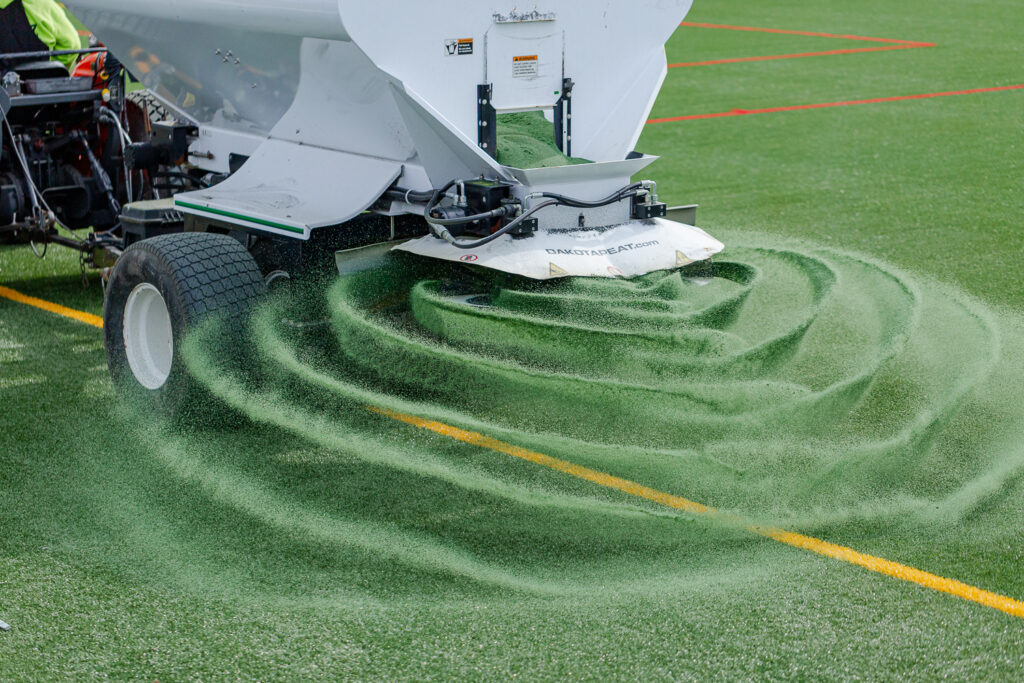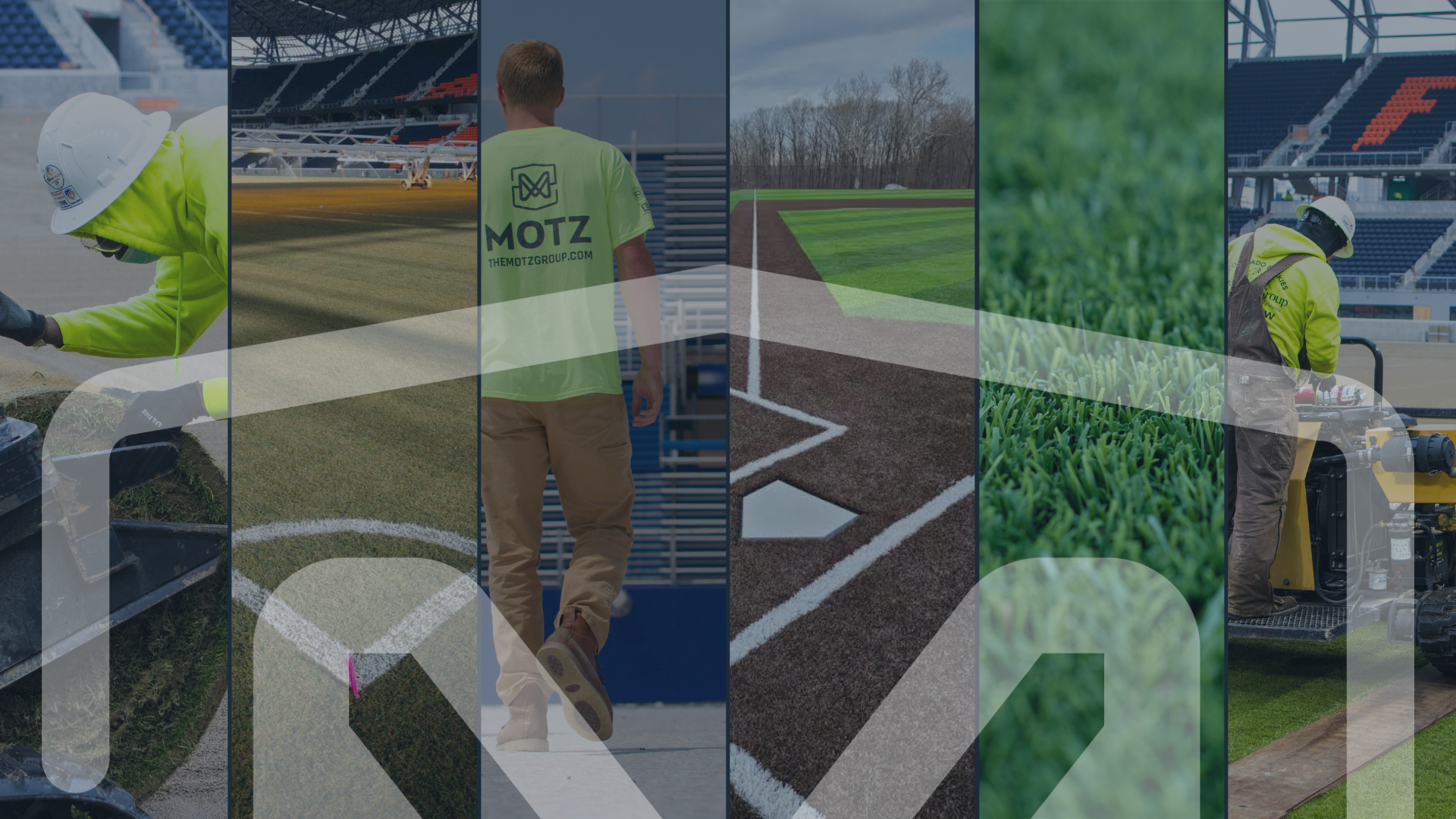
Sports Field Blog
Subscribe To Email Updates
Subscribe to our weekly newsletter and we’ll send updates straight to your inbox
Why You Need to Plan Early for Field Replacement
Planning for Field Replacement: A Five-Step Replacement Plan
Sports fields are designed to take a licking and keep on kicking; the more successful your field is, the more use and abuse it’s taking on a day to day basis — that’s what it was built for. Even as the materials and technology of modern sports fields continue to evolve, and even with steady maintenance and smaller-scale touch-ups, wear and tear is inevitable. As your field ages, that can in turn lead to performance problems, injuries to your athletes, and an unprofessional appearance. At some point, your field will need to be replaced.
A complete turf replacement is no small task, but with the right team and planning, it can be handled with efficiency — both in terms of time and your bottom line. A realistic sense of what’s required will help you build an appropriate timeline and effectively prepare. With a project of this scale, being ready in advance, before your field is worn down, really comes down to being prepared and ready on time.
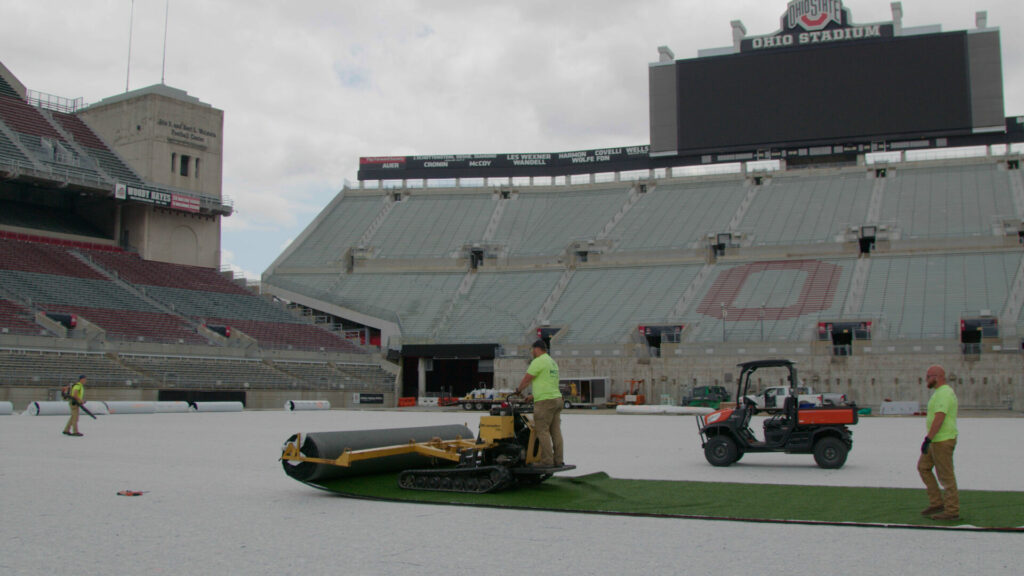
How Often Do You Need to Replace Turf?
The most state-of-the-art fields will suffer wear and tear from athletes on a daily basis — that’s what they were built for! Between practices, games, and community use, even the highest quality field will need to be replaced over time. The general life expectancy of a synthetic turf field that sees regular use is 8-12 years. But with technological advancements in the industry and dedicated maintenance programs in place to keep fields in tip top shape, fields are now able to outlast previous lifespans. One of the best ways to extend the lifespan of your field is to ensure its proper maintenance and to catch minor problems before they blossom into major issues. Motz provides both an annual, five-step maintenance program, as well as urgent repairs as needed; in addition to keeping your field functioning for as long as possible, initiating regular check-ups is essential for peace of mind.
Whether or not you have a regular maintenance program in place, you’ll want to keep an eye out for some immediately recognizable signs that your field is in need of attention. These include visible fading, matting of the material, hardening of the infill, and separation of the seams, the last of which is particularly noticeable around the edges of field markers and logos. We’ve got a handy guide that outlines what to look out for between cleanings and before making major repairs.
How Long Does It Take To Complete A Turf Field Replacement?
If you know your field is getting up there in years, now is the time to start planning your turf field replacement. And you’ll want to get ahead of it before too much wear and tear starts affecting field performance and player safety.
So, how much time will you need?
The actual turf replacement itself takes approximately four to six weeks, depending on the contractor and company you work with — not an unreasonable window to slot into the year. But before that process can begin, you should expect about 12 months of planning, coordinating, and preparations. That pre-production phase is essential to consider. It takes plenty of time to properly assess what your actual needs are; the budget and fundraising required; and a detailed plan of action. Here’s a quick run through of what to keep in mind as you build out your timeline.
Early Turf Replacement Plan Checklist
1. Analyze your current field
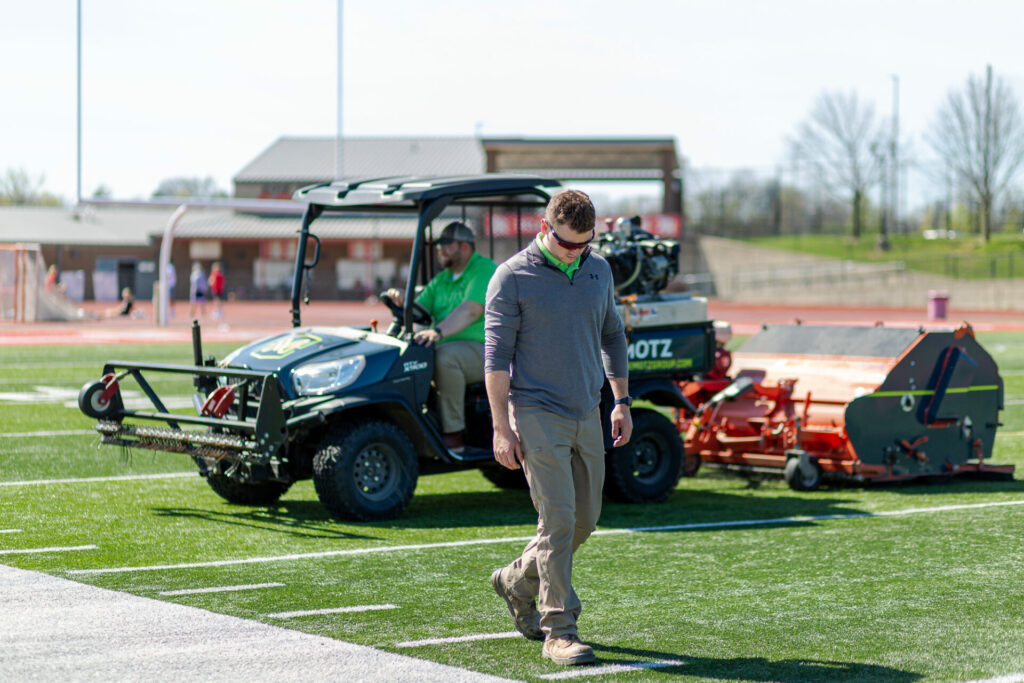
An important first step, particularly if you are replacing your field for the first time or are relatively new to the facility, is an analysis of the base. This is especially key if you’ve noticed any ponding or slow drainage around the field following a heavy rain, both of which are signs of a compromised base (and, we might add, not ideal conditions for playability). You might also notice loose seams, torn inseams, worn turf, or reduced infill levels — all are visible alerts that your field is aging and needs some TLC. Even if you haven’t seen these telltale signs, challenges to the quality of your field may be more than skin deep. When you’ve already decided to replace the surface-level of your field, it’s the perfect time to ensure that what lies beneath is still up to snuff. A thorough analysis will determine any hidden problems before they arise and interfere with the operation of your field or the lifespan of your turf replacement itself. And, as an additional benefit, an analysis will lead to a more accurate estimate of the work — and cost — required.
When you’re thinking about a field replacement, it’s also a good idea to bring in a field consultant for an overall needs analysis, and to determine the best solutions for your specific needs. What sports will the field be used for? Does it meet industry standards for size and safety? Which materials are best suited for your field’s activities? A consultant from a company with a wide range of experience and expertise will provide helpful insight as you wade through the many questions that will arise, and can help you find solutions that will fit your budget while meeting your desired outcomes.
2. Select your expert partners
Now that you have a real sense of what your field needs, an essential step is to bring together the team of experts who will handle the work required. This is a great time to enlist Motz, if you haven’t already, to serve not only as synthetic turf and sports field experts with over 45 years of experience, but to provide project management as well. This establishes a single point of contact for the work to come—from vendor vetting to logistics management to timeline coordination and more, skilled project management will save you time, money, and most importantly, headaches.
3. Consider the bigger picture

Before you dive into turf replacement, you may want to consider bundling your maintenance and renovation projects to limit lost playing time. For example, if your running track needs cleaning or repairs (the lifespan of a running track is 8-15 years, so it will likely be due for some attention around the same time as your field!), planning that work to coincide with your field replacement means your overall facility will be out of commission for less time. However, this may increase the complexity of planning required—for example, routes of ingress, the order of what must be addressed, and access limitations may all be affected by tackling more than one project at once, so each must be considered together as you lay out the timeline and think through any potential complications. Planning ahead allows for building collaborative teams of specialists who can coordinate their efforts as effectively and budget-consciously as possible. Here are some potential upgrades to think about pairing with your field replacement.
4. Build your budget
Time is money, as they say. Part of planning early for proper turf replacement means allocating time for determining the budget you’ll need, and what it will take to have the resources to handle it. The first step is to determine whether your field is still under warranty, and whether the replacement work required applies to that warranty. From there, you’ll want to work with your project manager and the experts you’ve brought on to determine the cost of the design, safety, and material renovations you’ll be making. Some of the factors that will come into play as you build your budget will be the size of the field; the sports the field will be used for; any customizations or additional design changes (like new logos and watermarks using the GAME ON technology) you want; the extent of repairs needed to provide a sufficient base for your field; the turf system and infill materials selected for the field; and disposing of the old field sustainably.
Fundraising to meet that budget needs to be worked into your timeline as well. You can look back to your organization’s history with raising funds for renovations, upgrades, or other major projects to get a sense of how much time might be needed, while making sure to take current economic conditions and general community engagement into consideration. The less your constituents are aware of the need for a replacement field, the longer the runway you’ll want to plan for to get to your budgetary goals.
If you’re interested in procurement, you may want to look into a cooperative purchasing program; Motz is an awarded vendor for several of these programs. As such, we have committed to provide the best pricing, as well as terms and conditions, available to participating members.
5. Get started
It’s time to replace your synthetic turf field and you know what you need, what you want, and how much it will cost to get it: it’s time to dig in. In many ways, the 12 months devoted to planning and preparation can be more challenging than the replacement work itself. Having these steps in mind and knowing what will be required ahead of time can only make that process easier. From day one, the experts at Motz will partner with you every step of the way. And, once your brand new field is installed, they’ll be on hand for repairs, maintenance, and anything that may arise.
Work With the Motz Team
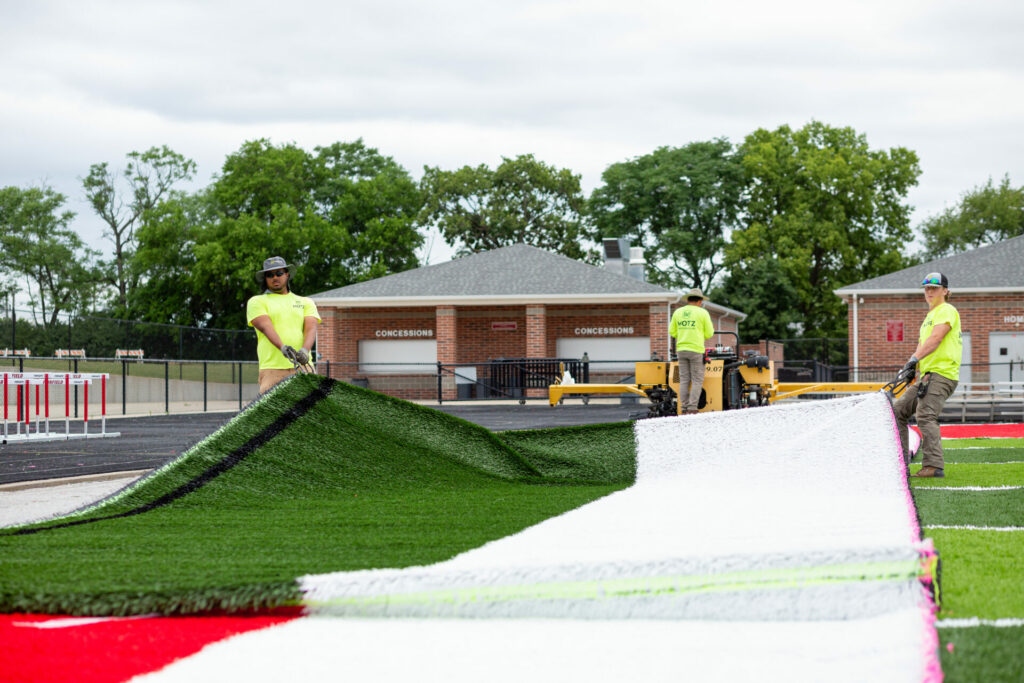
At Motz, we believe in delivering the best experience from initial planning to the finished product. If your field is nearing replacement time, we’re here to help!
Reach out to our team to learn more about synthetic turf field analysis and replacement today.
Similar Blogs

